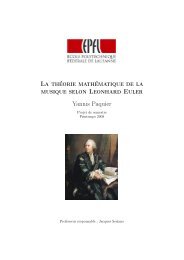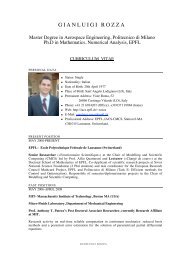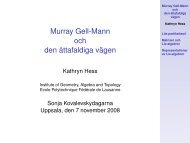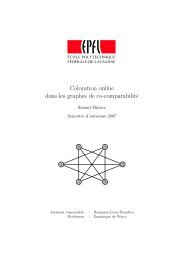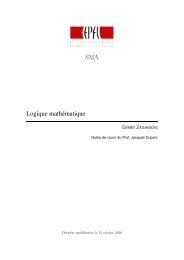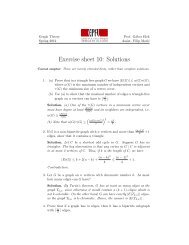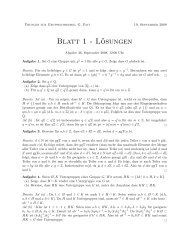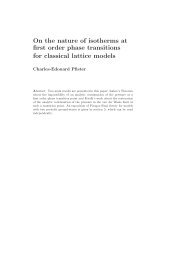Decision Models in Skiable Areas - EPFL
Decision Models in Skiable Areas - EPFL
Decision Models in Skiable Areas - EPFL
Create successful ePaper yourself
Turn your PDF publications into a flip-book with our unique Google optimized e-Paper software.
3 METHODOLOGY - DISCRETE CHOICE MODELS 6<br />
As seen <strong>in</strong> the previous section the determ<strong>in</strong>istic part <strong>in</strong>cludes an alternative specific<br />
constant. The mean of the random variable can be added to the ASC’s. So that <strong>in</strong><br />
cont<strong>in</strong>uation, the means of the random variables are always supposed to be zero.<br />
The variance can be chosen arbitrary. The argumentation is also illustrated <strong>in</strong> the<br />
same example as above. Suppose that the random terms ε i 1 resp. ε i 2 are replaced by<br />
αε i 1 resp. αε i 2 with α > 0. Indeed, we have<br />
P(V1 − V2 ≥ αε2 − αε1) = P( 1<br />
α (V1 − V2) ≥ ε2 − ε1) (7)<br />
so that the determ<strong>in</strong>istic term, <strong>in</strong> fact the coefficients βi, is modified by a factor 1<br />
α .<br />
Usually, two different distributions for the random term are used. They def<strong>in</strong>e two<br />
different families of models.<br />
First, the normal or Gauß distribution leads to the family of the Probit models. In<br />
this models, it is assumed that the random terms are normally distributed, with mean<br />
zero. The density function is<br />
fnormal(x) = 1<br />
σ √ 2π<br />
1 x<br />
e− 2 ( σ )2<br />
with σ a positive scale parameter. Indeed, σ 2 is the variance. It is important to notice<br />
that the different ε i a don’t have to be <strong>in</strong>dependent and can be correlated.<br />
In the second case, the family of the Logit models, it is assumed that random the<br />
term is <strong>in</strong>dependent and identically Gumbel distributed. The density function is<br />
fgumbel(x) = µe −µ(x−η) e −eµ(x−η)<br />
where η is the location parameter and µ the scale parameter. This two families are<br />
expla<strong>in</strong>ed precisely <strong>in</strong> the next sections<br />
3.5 Probit <strong>Models</strong><br />
3.5.1 Mult<strong>in</strong>omial Probit Model<br />
As mentioned above, the Probit models assumes a normal distribution for the errors.<br />
As consequence and advantage, it allows to capture all correlations between different<br />
alternatives because they are not supposed to be <strong>in</strong>dependent. Due to the assumption<br />
that C is f<strong>in</strong>ite, the elements of C can be numerated and as consequence C is of the<br />
form C = {a1, a2, . . . , an}. The utility function U i a, ∀a ∈ C, can be written <strong>in</strong> a vector<br />
form. We def<strong>in</strong>e −→ U i , −→ V i and −→ εi componentwise by −→ U i (j) = U i aj , −→ V i (j) = V i<br />
aj and<br />
−→<br />
i i ε (j) = εaj . Then we have<br />
−→<br />
U i = −→ V i + −→ ε i<br />
(10)<br />
where −→ ε i follows a multivariate normal distribution of mean zero and variance covariance<br />
matrix Σ i . So that<br />
PC(k) = P(U i (k) ≥ U i (j)) ∀j ∈ C (11)<br />
The disadvantage of the Probit <strong>Models</strong> is the normal distribution. S<strong>in</strong>ce the analytic<br />
formula of the distribution fonction does not exist, it has to be approximated and causes<br />
a lot of problems.<br />
(8)<br />
(9)



